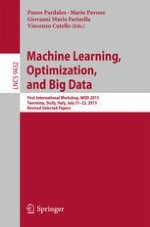2015 | OriginalPaper | Chapter
Intent Recognition in a Simulated Maritime Multi-agent Domain
Authors : Mohammad Taghi Saffar, Mircea Nicolescu, Monica Nicolescu, Daniel Bigelow, Christopher Ballinger, Sushil Louis
Published in: Machine Learning, Optimization, and Big Data
Publisher: Springer International Publishing
Activate our intelligent search to find suitable subject content or patents.
Select sections of text to find matching patents with Artificial Intelligence. powered by
Select sections of text to find additional relevant content using AI-assisted search. powered by
